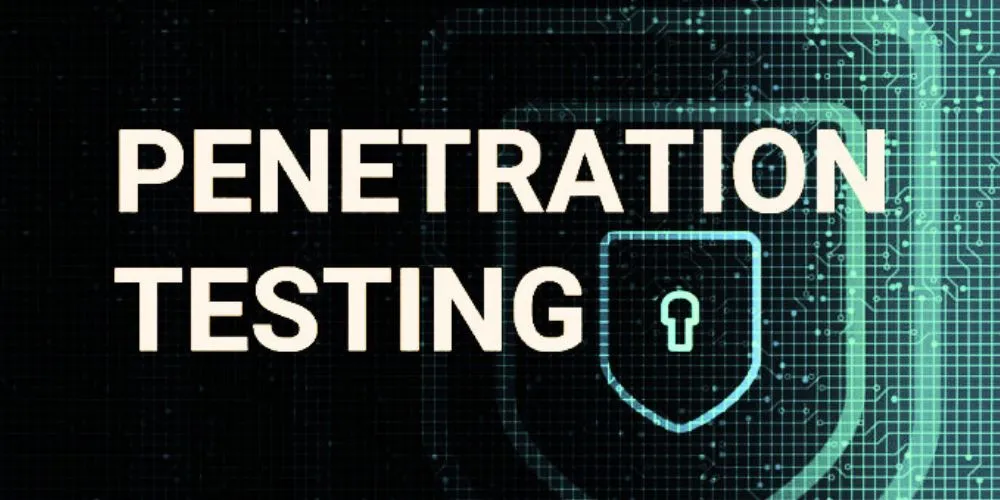Penetration testing, a crucial facet of cybersecurity, is pivotal in identifying and mitigating vulnerabilities within digital systems. This article delves into the comprehensive domain of penetration testing, exploring its fundamental principles, diverse methodologies, key advantages, notable applications, and the challenges it addresses within the dynamic landscape of cybersecurity.
Unveiling Penetration Testing
Penetration testing, often called ethical hacking, is a proactive and systematic approach to assessing the security of computer systems, networks, and applications. The primary goal is to simulate real-world cyber-attacks to identify weaknesses and vulnerabilities malicious actors could exploit. Organizations gain valuable insights into their security posture by employing ethical hackers or penetration testers, enabling them to fortify their digital defenses effectively.
Key Components of Penetration Testing
Understanding the key components of penetration testing is essential for comprehending its scope and impact:
- Reconnaissance: This initial phase involves gathering information about the target system or network. Ethical hackers use publicly available information, such as domain names or IP addresses, to understand the potential attack surface.
- Scanning: The scanning phase involves identifying live hosts, open ports, and services on the target network. Tools like Nmap or Nessus are commonly used to conduct comprehensive scans and assess vulnerabilities.
- Gaining Access: Ethical hackers exploit identified vulnerabilities to gain unauthorized access. This phase mimics the tactics used by malicious actors, providing organizations with insights into potential points of weakness.
Methodologies of Penetration Testing
Penetration testing employs various methodologies to simulate real-world cyber-attacks effectively:
- Black Box Testing: In black box testing, ethical hackers have no prior knowledge of the target system. It simulates a scenario where attackers have limited information about the target, testing the organization’s overall security posture.
- White Box Testing: White box testing, on the other hand, involves providing ethical hackers with comprehensive information about the target system. It allows testers to assess specific areas and conduct a more targeted evaluation.
- Gray Box Testing: Gray box testing combines black box and white box testing elements. Ethical hackers have partial knowledge of the target system, simulating a scenario where some information is available to attackers.
Advantages of Penetration Testing
The adoption of penetration testing brings forth a multitude of advantages, fortifying the overall security posture and resilience of digital environments:
Proactive Vulnerability Identification
One of the primary advantages of penetration testing is the proactive identification of vulnerabilities. By simulating real-world attacks, organizations can discover weaknesses before malicious actors exploit them, enabling timely remediation.
Risk Mitigation and Compliance
It assists organizations in mitigating security risks and achieving regulatory compliance. Organizations demonstrate due diligence in safeguarding sensitive information and meeting industry-specific requirements by identifying and addressing vulnerabilities.
Improved Incident Response Preparedness
It contributes to improved incident response preparedness. Organizations can refine and improve their incident response plans by simulating realistic cyber-attacks, ensuring a swift and effective response to security incidents.
Stakeholder Confidence and Trust
Regular penetration testing enhances stakeholder confidence and trust. Demonstrating a commitment to robust cybersecurity practices reassures clients, partners, and investors that the organization is proactive in safeguarding sensitive information.
Applications of Penetration Testing
Penetration testing finds applications across diverse industries and organizational structures, influencing how organizations identify and address potential vulnerabilities:
Web Application Security
In the realm of web application security, it is fundamental. Testing the security of web applications helps identify vulnerabilities such as SQL injection, cross-site scripting (XSS), and other common attack vectors, ensuring the integrity of online platforms.
Network Security Assessments
Penetration testing plays a crucial role in network security assessments. Ethical hackers assess the security of networks, identifying weak points that attackers could exploit to gain unauthorized access or disrupt operations.
Mobile Application Security
Securing mobile applications involves thorough penetration testing. Testing the security of mobile apps helps identify vulnerabilities specific to mobile platforms, including data storage, communication, and authentication issues.
Cloud Security Assessments
As organizations migrate to cloud environments, assessing the security of the cloud-based infrastructure becomes essential. Identifying vulnerabilities in cloud configurations ensures a robust and secure cloud computing environment.
Challenges in Penetration Testing
While the advantages are evident, the practice of penetration testing faces its own set of challenges. Addressing these challenges is critical for realizing the full potential of penetration testing efforts:
Scope Definition and Limitations
Defining the scope of penetration testing can be challenging. Organizations must clearly outline the systems and assets included in the test, ensuring ethical hackers focus on relevant areas while respecting legal and ethical boundaries.
False Positives and Negatives
Penetration testing may yield false positives or negatives. False positives occur when vulnerabilities are incorrectly identified, while false negatives are cases where actual vulnerabilities go undetected. Minimizing these errors requires a thorough understanding of testing tools and methodologies.
Impact on Production Systems
Testing activities may impact production systems if not carefully managed. Ethical hackers must conduct tests without disrupting normal operations, and organizations need to plan for potential downtime or disruptions during testing.
Skill and Resource Requirements
Effective penetration testing requires skilled professionals with up-to-date knowledge of evolving cyber threats. Organizations may face challenges recruiting and retaining skilled, ethical hackers, necessitating ongoing training and development initiatives.
Future Trends in Penetration Testing
As technology continues to evolve, future trends in penetration testing point toward advancements that further enhance its capabilities:
Automated Penetration Testing
The integration of automation in penetration testing is a growing trend. Automated tools can streamline repetitive tasks, allowing ethical hackers to focus on more complex assessments and increasing the efficiency of testing processes.
Threat Intelligence Integration
Threat intelligence integration enhances the effectiveness of penetration testing. Ethical hackers can simulate advanced cyber threats by incorporating real-time threat intelligence data, ensuring that organizations are prepared for sophisticated attacks.
Continuous Testing and DevSecOps Integration
The shift toward continuous testing and integration with DevSecOps practices is gaining prominence. Embedding security testing into the development lifecycle ensures that security is prioritized from the outset, reducing vulnerabilities in the final product.
Advanced Simulation of APTs
Advanced Persistent Threats (APTs) are becoming more sophisticated, requiring penetration testing to simulate these complex attack scenarios. Organizations increasingly focus on APT simulations to bolster their defenses against targeted and persistent threats.
Conclusion
Penetration testing is a cornerstone in proactive cybersecurity, providing institutions with a systematic approach to identifying and mitigating vulnerabilities before malicious actors exploit them. Its role in risk mitigation, compliance adherence, and incident response preparedness is paramount in an era where cyber threats continue to evolve.
While challenges persist, ongoing advancements and trends indicate a dynamic and promising future for penetration testing, with applications extending into new frontiers of technology, automation, and threat intelligence integration. The responsibility to safeguard digital fortresses through ethical hacking remains a shared commitment, urging organizations and cybersecurity professionals to embrace innovative approaches and stay at the forefront of an ever-evolving cybersecurity landscape.










